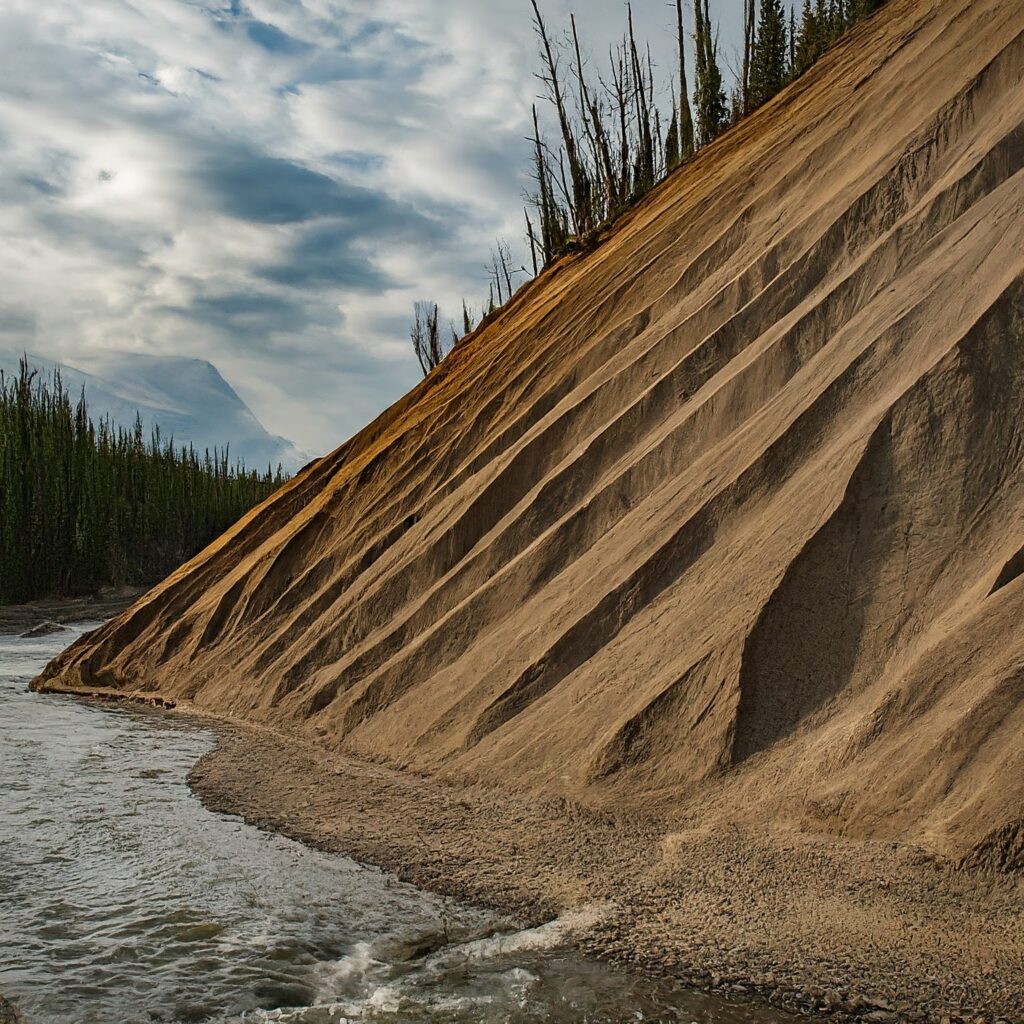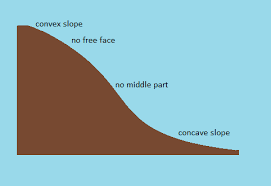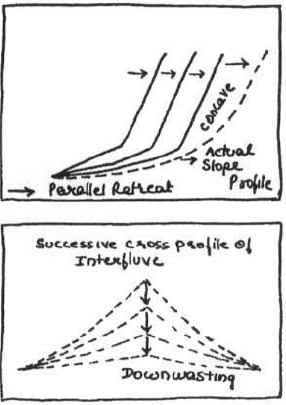Slope development is a fundamental aspect of geomorphology. It covers the study of the processes that shape the Earth’s surface and the resultant landforms. Slopes are formed through a combination of processes, such as erosion, weathering, and tectonic uplift, and they are critical components of the Earth’s landscape.
Slope Development
| Meaning | Process | Significance |
|---|---|---|
| Change in Elevation | Erosion, Weathering, and Tectonic uplift | Management of Natural Hazards |

Table of Contents
What is Slope?
Slope is the percent change in that elevation over a certain distance. Physical landscape is an assemblage of slopes. Slope constitutes the core of landform.

Why to study Slope Development?
Slopes play a critical role in shaping the Earth’s surface, and understanding their development is essential for a range of real-world applications. One of the key areas where understanding slope development is important is in the management of natural hazards.

Slopes are vulnerable to a range of hazards, like landslides, Rock falls, and Mudflows, which can pose significant risks to human communities. By understanding the processes that cause these hazards, geomorphologists can help communities prepare for and respond to them.
Another important area where understanding slope development is critical is in environmental management. Slopes are important components of the Earth’s ecosystems, and they play a key role in the water cycle and the cycling of nutrients and organic matter. Geomorphologists work with environmental scientists, planners, and other professionals to assess the impact of human activities on slopes and to develop strategies for minimizing that impact.
Finally, understanding slope development is important for land-use planning. Geomorphologists use their understanding of slope processes and landforms to inform decisions about the best use of land for different purposes, such as agriculture, urban development, and recreation. This includes the identification of areas that are most suitable for different types of development, as well as the design of infrastructure, such as roads, bridges, and buildings, to minimize their impact on the environment.
Processes of Slope Development
Slopes are formed through a combination of processes, including:
Erosion: Erosion is the removal of soil and rock by the action of wind, water, and ice. This process is responsible for shaping many of the world’s landscapes, including river valleys, coastlines, and mountain ranges.
Weathering: Weathering is the physical and chemical breakdown of rock and soil by the action of water, temperature changes, and other environmental factors. This process is important in the formation of slopes because it weakens rock and soil, making it more vulnerable to erosion.
Tectonic Uplift: Tectonic uplift is the movement of the Earth’s crust that results in the formation of mountains and other landforms. This process is important in the formation of slopes because it can create steep gradients that are vulnerable to erosion and other slope processes.
Mass Wasting: Mass wasting is the movement of soil and rock down a slope due to the force of gravity. This process is responsible for many types of slope failure, such as landslides and rock falls.
Vegetation: Vegetation plays an important role in slope development by stabilizing the soil and rock on slopes and slowing the processes of erosion and mass wasting.
Significance of Slope Development
Slope development is a critical component of the Earth’s landscape and has a range of significant impacts. Some of the most important impacts of slope development include:
Soil and water management: Slopes play a key role in the water cycle and the management of soil resources. By understanding the processes that shape slopes, geomorphologists can help communities manage their water resources and maintain soil fertility.
Biodiversity: Slopes support a range of unique and diverse ecosystems, including forests, wetlands, and grasslands. By understanding the processes that shape slopes, geomorphologists can help protect and conserve these important habitats.
Cultural heritage: Slopes are often associated with important cultural sites and landmarks, such as ancient ruins, temples, and burial mounds. By understanding the processes that shape slopes, geomorphologists can help preserve these important cultural resources for future generations.
Economic development: Slopes play an important role in a range of economic activities, including agriculture, forestry, and tourism. By understanding the processes that shape slopes, geomorphologists can help communities make informed decisions about land use and economic development.
Understanding slope development is important for a range of real-world applications, including the management of natural hazards, environmental management, and land-use planning.
Slope Decline Theory of W. M. Davis
Slope change is a sequential process.
The Slope Angle declines continuously, from Youth (Convex), Mature (Rectilinear) and Old (Concave)
Youth Stage
Steep Convex shape evolved during the youth stage of cycle of erosion due to active down cutting.
Mature Stage
Lateral erosion exceeds the vertical erosion, slope decreases and smooth curve is formed.
Old Stage
Marked decrease in Slope, Slope becomes Concave. The model is based on the assumption of crustal stability for longer duration.
Slope Replacement Theory of Penck
- There is a river on the foot of the Slope which is neither eroding nor depositing but is capable of removing the material coming from upper segments of the Slope.
- The Rocks fall from the upper reaches, and the lower segments of the Slope remains comparatively Stable.
- For falling the Rocks gradients must be great, this gradient is available to all the units of rocks except the lowest portion of hill.
- The Slope face except lower segment goes parallel retreat due to uniform rate of weathering and removal of material.
- The parallel retreat results in Concave Slope Profile.
- If the parallel retreat is happening on the both ends, then, both sides is subjected to down wasting and there is reduction in altitude.

